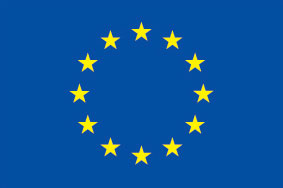The Filipino pork industry is trying to figure out how to fight ASF and reduce its imports dependence. Lately, the Department of Agriculture has revised its pig recovery program, which they have now called Modified Integrated National Swine Production Initiatives for Recovery and Expansion [1]. They aim to prioritize sow-weaner operations and artificial inseminations to reinstate the industry; however, the strategy is still at an early stage and facing issues like ASF and imported meat with competitive prices.
The pig population is still falling, and high temperatures do not help to recover. ASF disease is expected to grow in the following months. 11 regions (out of 18) have active cases. This includes 22 provinces and 64 municipalities [2], while a month ago were only 9 regions and 20 municipalities.
For imported pork, Spain is still a strong first exporter. Competition and expected increase in Philippines pork demand can be covered by the Spanish hog industry. CIF prices remain stable, as well as production according to data from MAPA [3]. The Spanish pork sector continues to evolve compared to the rest of the EU.
In this import-driven strategy, the Philippines is finding new partners that offer more affordable prices but still high-quality pork meat. According to the Bureau of Animal Industry data, Brazil has become the second-largest pork supplier [4]. At the beginning of March, the Brazilian Government announced they had forged a brand-new system accreditation and pre-listing establishment agreement with Manila [5]. Under the agreement, authorities are not going to scrutiny plant per plant (as done before) but the focus shifts to a system validation. Many meat providers and companies are registered, being allowed to enter Philippines. Import data shows this change of trend. Brazilian pork shows a 65% increase in January-June if compared to 2023 [6]. Specifically for pork belly Brazil is gaining market share every month and has become now top exporter for this commodity in the Philippines, with a volume of 1,6 million kg. In January, other EU exporters like Spain or France were still above [7]. For pork belly, Brazil had in June a CIF in-quota price of 445K EUR vs 443K EUR for Spanish.
Regarding how the domestic market is evolving, there have been some changes to follow on. Last quarter’s newsletter explained that inflation was affecting consumers’ budgets as retail market prices were rising because of very high farm-gate prices. This seems to be slightly changing. When checking prices in the principal markets in Manila for pork belly (liempo) and ham (kasim), both commodities have been going down since June. This down-trend can also be explained by seasonality, as every summer domestic prices decrease, as production remains stable, but consumption is low.
With a consumer that is affected by inflation together with the lack of competitiveness for domestic producers, imports remain crucial.
[1] Philippines adjusts its revival strategy in light of ASF – Asian Agribiz (asian-agribiz.com)
[2] bai.gov.ph/stakeholders?Rep=African Swine Fever
[3] Genesus Global Market Report – EU and Spain, July 2024
[4]https://www.asian-agribiz.com/2024/08/08/brazil-enjoys-healthy-share-of-the-philippine-meat-market/
[5] Brazil ready to export more meat to PH – Philippine Daily Inquirer
[6] Philippines now Brazil’s 2nd biggest market for pork | Philstar.com




